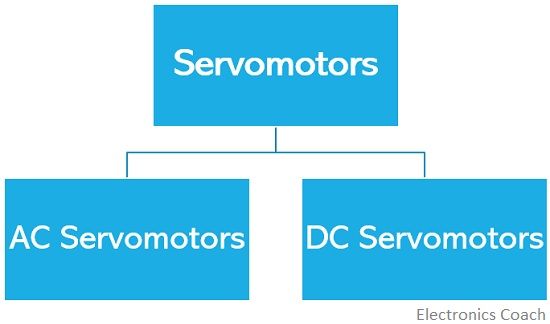Servomotors are electrical devices used for converting electrical signal provided as input into a precise angular velocity. It is known as a servo system. Basically, a servo system is the one that generates some form of mechanical variable like velocity, acceleration or position as its output.
A servomotor is designed to generate the mechanical equivalent of the applied electrical signal.
It is known to be a low power motor that finds applications in servomechanisms or position control systems. In servomotor, the applied electric input allows the rotation of the motor at a certain angle. Also, it does so by great precision, this means rotation at a specified angle can be accurately achieved.
What is servomechanism?
Servomechanism is the term associated with positioning systems. It is a mechanism which is only applied to the systems where the feedback and error correction signals control the mechanical position or its derivatives like velocity and acceleration.
Servomotor uses servomechanism to convert the applied electrical energy into precisely controlled motion by making use of negative feedback.
We have already discussed that servo systems are used in position control systems. Thus are referred as the automatic control system that uses error signals for their operation. The amplified form of these signals is used to drive the motors.
In the case of servomotors, position feedback is used to control its motion and final position.
It is known to be a simple electric motor which is controlled by servomechanism.
Working of Servomotors
A servomotor has 4 major components on which its working is dependent. These are as follows:
- Motor
- Gear system
- Position Sensor
- Control circuit
These four units combinedly comprise the servomotor. We have already discussed that it uses a feedback control system that utilizes the error signal to correct the position of the motor. More specifically, by using a feedback control system, the shaft precisely achieves a position at a particular angle.
It operates in a way that initially; the motor is excited by externally supplying power to it. It is to be noted here that the speed of the motor depends on the applied voltage to it.
This means that to control the motor speed, the voltage must be adjusted accordingly.
In servomotor, the potentiometer is generally used as the position sensing and controlling device. Basically, according to the supplied input voltage, the device rotates and attains a specific position.
Further, the position of the shaft is analyzed by the position control device. The feedback potentiometer after analyzing the position of the shaft converts it into a specific voltage level.
Later on, a comparison between actually achieved voltage level and the desired voltage level is done.
The difference generated from the two different voltage levels is the error signal which is amplified and is provided to the control unit. The control unit then generates a signal which implies the amplified error signal that controls the voltage provided to the motor. The voltage level of the error signal provided to the motor now changes its position.
In this way, the desired position of the motor is achieved with high precision using feedback potentiometer.
Types of Servomotors
The major classification of the servomotor is done on the basis of the type of supply applied to it for its operation.
This is so because the positioning of the motor is controlled with the input electrical signal which is either analog or digital in nature.
Thus, it is classified as:
AC Servomotor: The type of servomotor that uses AC electrical input for providing a mechanical positional output is known as AC servomotor.
DC Servomotor: When the applied input to the motor is DC in nature then that configuration of the servomotor is known as DC servomotor.
Requirements
The major requirements of the servomotor are as follows:
- There must exist a linear relationship between the control signal and the speed of the rotor.
- It should be designed to provide a fast response.
- It must exhibit the lowest possible inertia. This is so because there should not exist time delay, between removing the control signal and stopping of the motor.
- The speed-torque characteristics of the motor should be high.
- It must possess a stable operation with easily reversible characteristics.
Applications of Servomotors
Servomotor finds applications in several industrial and commercial system. The applications of servomotor are as follows:
- In the robotic system: These are widely robotic systems in between each and every connecting point of a single unit so as to have proper positioning movement between the parts.
- In the antenna system: These are also used in antenna positioning systems to provide accurate position and elevation to the antenna so that it can exhibit proper transmitting and receiving characteristics.
- In camera system: These are used in autofocus of cameras in order to precisely correct the position of the lens to sharpen the images.
This is all about servomotors and its applications.
Leave a Reply